
12 minute read
Been Green
“The finest steel has to go through the hottest fire” Time-TesTed Kaiser GeneTics 20 Th
annual ProducTion sale . Thursday, aPril 2, 2020 aT The ranch . ParK, Kansas SELLING: 65 18-20 Month-Old Bulls 20 Spring Yearling Bulls . 10 Registered Open ET Heifers
Advertisement
KA EnhAncE 890 . 9/25/18 . 19637884 Sire: SydGen Enhance . MGS: Mill Brae Identified 4031 HE SELLS

EPD % CED 15 2% BW -1.5 10% WW 64 20% YW 129 10% Doc 27 10% Marb .79 20% RE .98 5% $M 75 10% $W 75 10% $B 189 2% $C 320 1%
KA EnhAncE 896 . 9/27/18 . 19637886 Sire: SydGen Enhance . MGS: Mill Brae Identified 4031 HE SELLS
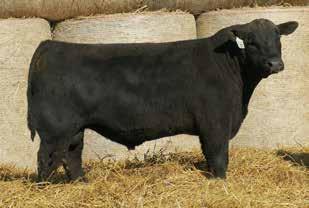
EPD % CED 10 20% BW -0.1 25% WW 63 25% YW 122 10% Doc 25 15% Marb 1.03 10% RE 1.10 2% $M 80 3% $W 77 10% $B 190 2% $C 326 1%
EPD % CED 11 15% BW 1.4 55% WW 76 4% YW 128 10% Doc 26 15% Marb 1.08 10% RE .85 15% $M 71 15% $W 82 4% $B 170 10% $C 291 3% KA UniqUE B829 . 11/7/18 . 19373612 Sire: Deer Valley Unique 5635 . MGS: GAR 5050 New Design R529 HE SELLS
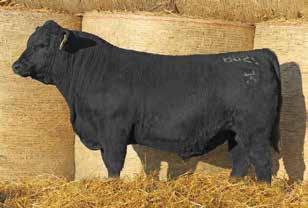
For more information about our program, please contact: Darrell & Frina Kaiser . 6051 Co. Rd. X . Park, KS 67751 Home (785) 754-2334 . Mobile (785) 673-3357 dfkaiser@ruraltel.net . www.KaiserAngus.com Kaiser Angus EPD % CED 17 1% BW -1.3 10% WW 66 20% YW 123 10% Doc 27 10% Marb 1.07 10% RE .79 20% $M 89 1% $W 87 2% $B 160 15% $C 297 2% KA FUll MEAsUrE B907 . 2/19/19 . 19498754 Sire: KB-Full Measure C40 . MGS: GAR Sure Fire HE SELLS
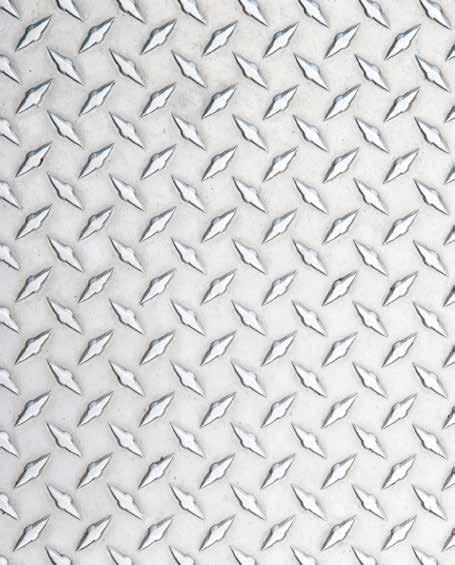

Been Green Facts about positive cattle contributions to the global environment and sustainability speak for themselves.
By Wes Ishmael
“Animals are natural bioprocessors,” says Zhengxia Dou, PhD, Professor of agricultural systems at Pennsylvania’s School of Veterinary Medicine (Penn Vet), noting that livestock’s unique and indispensable natural biological processes enable them to consume plant and food residues that are either indigestible by humans, unpalatable to people, or are no longer sellable for any of a number of reasons—what she refers to as IUUB residues (indigestible, unpalatable, or unsellable biomass). “By maximizing the use of IUUB, the livestock sector of agriculture actually contributes to this societal issue (climate change) in a very positive way,” Dou says (more later).
You know all of that, though specific statistics may not be on the tip of your tongue. Producer access to such information is a byproduct of the fact sheet series—Tough Questions about Beef Sustainability—funded by the Beef Checkoff. You can find the series here: BeefResearch.org/ToughQuestionsAboutBeefSustainability.aspx.
What follows are some of the issues addressed in the Fact Sheet Series. U.S. Cattle Contribute Little Greenhouse Gas
“According to the U.S. EPA’s greenhouse gas (GHG) emissions inventory, 2% of U.S. emissions come directly from beef cattle (methane from cattle belches, methane and nitrous oxide from manure). Total direct emissions from all agricultural production, crops and livestock collectively, were 8.4% of U.S. emissions in 2017. Agriculture, land use, land use change and forestry combined in the United States are a
WOODBURY FARMS
9th Annual Angus Production Sale Wednesday, March 18, 2020 • 6:00 p.m. Overbrook Livestock Commission Company Overbrook, Kansas 50 Angus Bulls (2-year-olds and spring yearlings) 70 Yearling Open Heifers (both reg. Angus and commercial) 30 Young Commercial Pairs ~ Offering ~ TEX Playbook

Sires include: TEX Playbook, Connealy Armory, Connealy Legendary, Baldridge Bronc, Baldridge Beast Mode, LD Capitalist 316 and more.

Howard Woodbury (785) 453-2492 or 241-0515 John Woodbury (785) 453-2223 or 229-2557 23200 S. Stubbs • Quenemo, KS 66528 hhwoodbury@hotmail.com www.woodburyfarmskansas.com
net sink of CO 2 equivalent (CO 2 e) emissions, meaning they removed 172 million metric tons of CO 2 e from the atmosphere in 2017.”
That’s from the executive summary of the U.S. Cattle Production Sustainability Overview. It goes on to explain, there are large global disparities in GHG emis sions per pound of beef produced.
“The U.S. has one of the lowest beef GHG emissions intensities: 10–50 times lower than other parts of the world, according to the executive summary. Most of this variation is driven by the number of cattle required to produce beef. For example, the U.S. produces around 18% of the world’s beef with 8% of the world’s cattle herd. Fewer cattle required for a given amount of beef produced means fewer GHG emissions and fewer natural resources required to produce human nourishment. The U.S. is a leader in beef production efficiency because of scientific advancements in beef cattle genetics, nutrition, husbandry practices and biotechnologies.”
Of course, that reality flies in the face of popular press articles that often suggest U.S. GHG emissions are comparable to those of the entire transportation sector.
“When divorcing political fiction from scientific facts around the quantification of GHG from all sectors of society, one finds a different picture. Leading scientists throughout the U.S., as well as the U.S. Environmental Protection Agency (EPA), have quantified the impacts of livestock production in the U.S. which accounts for 4.2% of all GHG emissions, very far from the 18% to 51% range that advocates often cite,” explains Frank Mitloehner, professor and air quality specialist at the University of California-Davis, in his white paper “Livestock’s Contributions to Climate Change: Facts and Fiction.” “Comparing the 4.2% GHG contribution from livestock to the 27% from the transportation sector, or 31% from the energy sector in the U.S. brings all contributions to GHG into perspective,” Mitloehner says. “Breaking down the 4.2% EPA figure for livestock by animal species, shows the following contributors: beef cattle 2.2%, dairy cattle 1.37%, swine 0.47%, poultry 0.08%, sheep 0.03%, goats 0.01% and other (horses, etc.) 0.04%.
“It is sometimes difficult to put these percentages in perspective, however; if all U.S. Americans practiced Meatless Mondays, we would reduce the U.S. national GHG emissions by 0.6%. A beefless Monday per week would cut total emissions by 0.3% annually. One certainly cannot neglect emissions from the livestock sector, but to compare them to the main emission sources would put us on a wrong path to solutions, namely to significantly reduce our anthropogenic carbon footprint to reduce climate change.”
Even on the correct path, it’s easy to ignore essential road markers.
“Another key component of reducing GHG emissions from the whole beef system is the role of the consumer,” according to “Removing Beef from the Human Diet,” a fact sheet in the sustainability series. “Approximately 20% of edible beef is wasted at grocery stores, restaurants and in the home. As with other foods, the amount of nonrenewable resources used and the environmental impacts that went into producing the portions of beef that are being sent to a landfill are often overlooked. Consumers could improve beef sustainability by 10% if beef waste were reduced by half.” Buying Local Isn’t the Answer
Another popular solution to reducing GHG emissions, proffered by some consumers is to simply buy locally raised products.

“Approximately 80% of GHG emissions occur in the beef value chain before the animal is harvested and approximately 1-3% of GHG emissions occur due to transportation of beef to the consumer,” explains another sustainability fact sheet “Is Local Beef More Sustainable?”
“Local food, including beef, is either marketed directly to consumers, or marketed to foodservice (e.g., restaurants) and retailers and then purchased by consumers. The appeal of purchasing local foods is often associated with perceived reductions of greenhouse gases because the product travels shorter distances from the producer to the consumer, thereby reducing what is known as ‘food miles.’ However, there is a tradeoff between the increased frequency of trips and
CATTLEMAN’S CHOICE NEW SALE DATE! BULL SALE SUNDAY 3•17•19 1 P.M. CST
SELLING 60 18-month-old Bulls 50 Angus Bulls | 10 SimAngus Bulls 2211 15 th Road (at the corner of Upland & 15 th Road) T Seven Ranch Sale Facility • GREENLEAF, Kansas Also selling: Justin Stout, auctioneer ~ Lunch provided ~ 20 Commercial & 5 Registered Heifers T Seven Ranch home-raised and AI bred for September 19 calves!
Baldridge Bronc
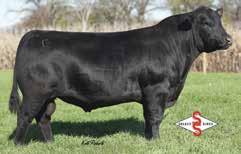
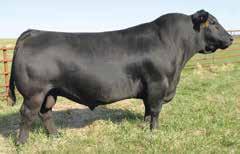
SAV Resource

Connealy Black Granite Resource ~ Bronc ~ Black Granite ~ Cash Crop ~ Patriot ~ Basin Bonus ~ Aviator ~ Commando ~ Breakthrough ~ Courage ~ Joe Canada ~ Broken Bow ~ Uproar ~ Generation 2100 ~ Sure Bet ~ Sharper Image Sires represented:
RUN DATE: 05/22/18 SCALE HOUSE AND SHRINK SYSTEM RUN TIME: 10:11:05 IBP GENE TRAC LEXINGTON, NE TURN-IN: 174599 KILL DATE: 05/19/18 LOT NUMBER: 030 SUPPLIER # 00174985 T SEVEN RANCH 1427 UPLAND RD GREENLEAF, KS BUYER NAME: RAY PALENSKE FORMULA STATISTICS: USDA AVG NEG. ADJUST 192.13 0.50 DESCRIPTION HEAD WEIGHT %WGT STAND % PAY WGT BASE PRICE 104 95216 100.00 QUALITY GRADING PRIME 60.0 55245 58.02 55242 CAB 40.0 36069 37.88 36069 CHOICE 4.0 3902 4.10 3902 SELECT 0.0 0 0 HEIFERETTE 0.0 0 0 NOROLL 0.0 0 0 OTHER 0.0 0 0 TOTAL
Cattlemen, calves sired by these bulls typically bring $2-$5/100 lb. more at sale time. Reasonably Priced! Bulls that really produce!
58% Prime 38% CAB 4% Choice 100% = $149.30/head in premiums
• All bulls performance tested • Strict breeding soundness exam • Stacked, predictable, proven pedigrees No ultrasound, no sorting ... just the bottom 2 / 3 of our calf crop!
T Seven Ranch Jerry, Mike & Tim Gilliam (785) 452-1548 ~ Jerry (785) 747-6969 ~ Mike G&G Angus T. Brad Gilliam (785) 747-7580 ~ cell (316) 734-4869 ~ Aaron Doll For catalog or information, contact: “75 Years of A.I. Represented in These Two Programs” “Best Genetic Value Anywhere!” Pictures, video and on-line catalog available at www.tsevenranch.com
smaller load sizes versus the distance traveled per trip in local beef systems as compared to the mainstream beef transportation system. This is because more beef moved per trip will translate into lower fossil fuel energy use and lower GHG emissions per unit of beef transported. Consequently, even if transportation distances were cut significantly for local beef, the impacts on GHG emissions are likely minimal.” Keep in mind that the term ‘local’ is relative. Some companies and consumers believe in-state is local, while others view a multi-state region that way; for others it means their hometown. Tradeoffs Come with Grain Versus Grass
In a different way, a similar discussion comes up within the cattle and beef industries with the notion that grass-fed beef is more sustainable than grain-fed. “The main difference in carbon footprints between grass-finished and grain-finished beef occurs as a result of the time spent in the finishing phase, the type of feed consumed, and the ending body weight of the cattle in the finishing phase,” explains another sustainability fact sheet, “Does Grass-Finished Beef Leave a Lower Carbon Footprint Than Grain-Finished Beef?” For grain-fed cattle, about 82% of feed intake per unit of carcass weight comes from grazing forage, pasture or rangeland, according to the fact sheet. Grass-fed cattle utilize forage throughout their lives.
“Grain-finished beef has a lower carbon footprint than grass-finished beef due to more efficient utilization of feed in the finishing phase, fewer days on feed and greater amount of beef produced per animal,” according to the fact sheet. “However, grass-finished beef contributes to sustainable beef production by utilizing forage resources during finishing to produce food from plants that are inedible by humans.”
Specifically, the higher-energy, lower-forage diet, shorter time spent on feed during finishing and heavier carcass weights translate into a 18.5% to 67.5% lower carbon footprint for grain-finished beef, compared to grass-finished beef.
Conversely, research indicates an advantage for grass-finished beef production over grain-finished beef production when expressing feed
Director of Herd Improvement.
With more Angus influenced cattle qualifying for the Certified Angus Beef ® brand than ever before, it’s clear that the Angus bull has become America’s bull. He sires calving ease, growth and superior marbling. He works well in any environment, and on any cow, regardless of breed. Make sure that America’s bull serves as your director of herd improvement.
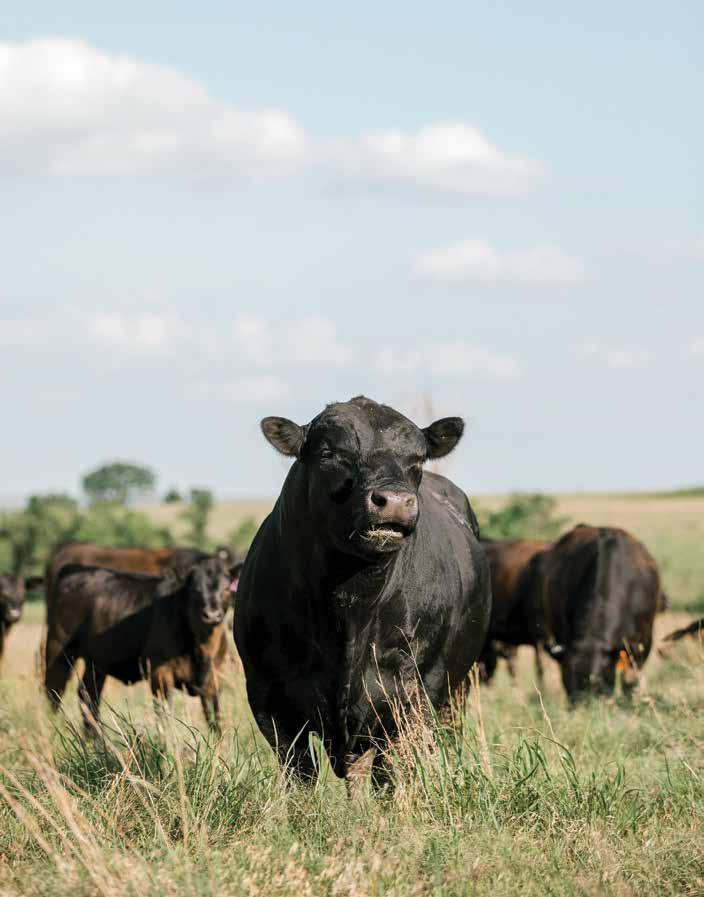
Angus. America’s breed. Go to www.Angus.org/businessbreed or call 816.383.5100 to learn more.
conversion as human edible energy returned per unit of human edible energy consumed by the cattle.
In sum, according to the fact sheet, “Ultimately, tradeoffs exist between the two beef production systems; however, beef producers using either system can sustainably meet consumer demand for beef by utilizing the resources they have in their part of the country.” Cattle Epitomize Upcycling
Often overlooked in mainstream conversation about cattle and GHG emissions is the fact that cattle convert what’s mostly inedible by man into a high-protein food source for mankind.
“In the U.S., 90% of the feed consumed throughout the lifetime of grain-fed cattle is human-inedible and cattle consume a number of different feeds that classify them as upcyclers,” according to the sustainability fact sheet, “How Does Upcycling Relate to Beef Production?
“Inadequate for growing crops for human consumption, the 800 million acres of rangeland grazed by cattle comprise 35% of the United States. Cattle consume by-products from the biofuel and food industries, such as distillers grains and wheat middlings, which are by-products of the ethanol production process and wheat flour milling process, respectively. Use of these by-products as cattle feed decreases the respective industry’s waste by providing an alternative use of the by-product compared to sending it to a landfill.”
For that matter, Dou points to the surge of processing by-products generated by the increased popularity of plant-based foods in consumers’ diets as an example of indigestible, unpalatable, or unsellable biomass (IUUB). Dou’s team is working with a California pilot project— Sustainable Alternative Feed Enterprises (SAFE)— to develop treatment technologies to convert post-consumer food waste into safe, nutritious livestock feed. That, of course, is an addition to the millions of pounds of IUUB already consumed by livestock, which are created in the production of products like orange juice and canola oil. Relative to the SAFE project, Dou’s lab systematically collects and tests feed samples derived from consumer food waste for feed safety evaluation, analyzing factors such as mycotoxins, heavy metals, pesticides, microbial contaminants, and nutrition parameters.
Bottom line, Dou and Penn Vet emphasize cattle and other livestock are critical partners in developing





